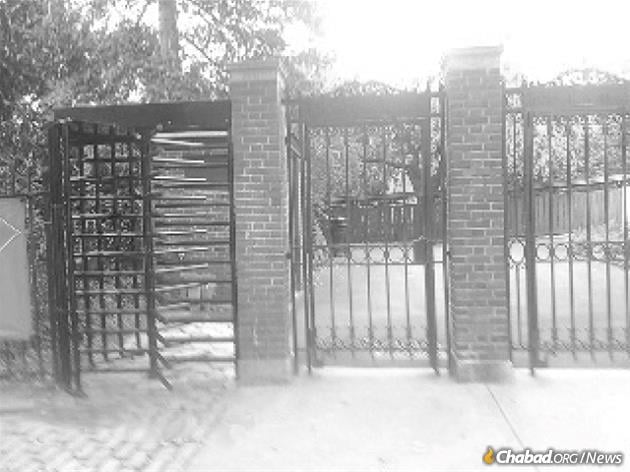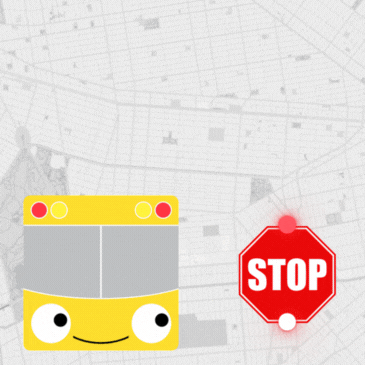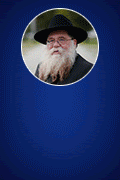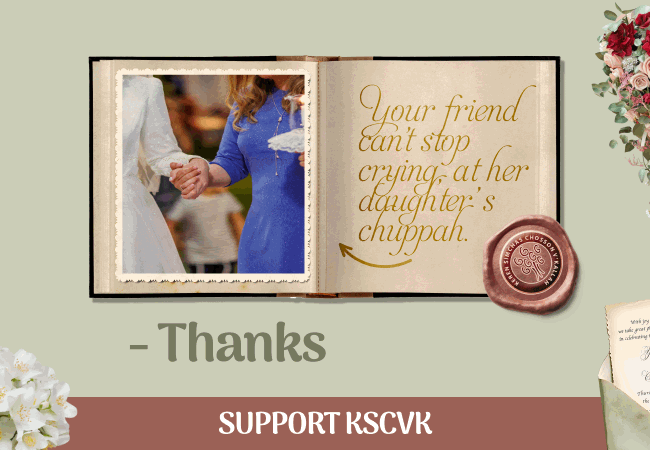
The Rosh Hashanah March That Lit Fires in the Rain
by Motti Wilhelm – chabad.org
It was the last thing either an American Jew or a European Jewish refugee expected to see in New York City.
In the 1940s and ’50s, during the Holocaust and its immediate aftermath, when the Jewish people began the slow, painful recovery from its devastation, many European Jews turned to New York and its promise of refuge. Joining their American brethren in safety, blended with the trauma of what they’d experienced still raw, many sought to tone down or even conceal their Judaism, hoping that blending into the American landscape would finally bring them peace.
The Rebbe—Rabbi Menachem M. Schneerson, of righteous memory, who had himself narrowly escaped the Nazis and lost close family, including a brother, in the Holocaust—took a radically different approach. After arriving in the United States in 1941 to join the court of his father-in-law, the Sixth Rebbe, Rabbi Yosef Yitzchak Schneersohn, of righteous memory, he immediately began bolstering his father-in-law’s efforts to foster a proud and courageous Judaism on these new shores.
One of the most striking early examples came on Rosh Hashanah of 1941, just a few months after his arrival. As Chassidim prepared for the Tashlich ceremony—when special prayers are recited at a body of water—the Rebbe galvanized them to do something bold. Instead of quietly making their way to the nearest body of water, he urged them to march, not merely walk, down Eastern Parkway toward the Brooklyn Botanic Garden, singing lively melodies all along the way.
This tradition continued for the next two and a half decades, even when met with challenges such as pouring rain or even locked gates, leaving a powerful impression on Brooklyn’s diverse Jewish community.
“As we were walking, a fellow approached us,” recalled the late Chabad Rabbi Zalman Posner, longtime rabbi of Congregation Sherith Israel of Nashville, Tennessee, in an interview about the 1942 march. “He was dressed very nicely in holiday attire—a black suit and white shirt—but he did not have a yarmulke or a hat on, so he was obviously not a very religious person. This fellow grabbed my arm and asked me, ‘Why are they singing? Why are they singing?’ I mumbled a reply, and then he said to me, ‘You know something—I have a spark in my soul, and when I heard those people walking down the street and singing because they are proud to be Jews, that spark just burst into a flame.’ And with that, he turned and walked away.”

The Chassidic March Through Brooklyn
The ideal time for Tashlich is the first afternoon of Rosh Hashanah, a two-day holiday. At the edge of a river, lake, or other body of water containing fish, we recite prayers invoking the Divine attributes of mercy and symbolically cast our sins into the water.
For many Jewish communities in Brooklyn, this presented a challenge. With vehicular travel prohibited on Rosh Hashanah, as it is on every Shabbat and most Jewish holidays, reaching the shoreline could mean a walk of well over an hour, hardly practical on such a busy and sacred day.
In Crown Heights, however—home since 1940 to Chabad-Lubavitch world headquarters at 770 Eastern Parkway—another solution emerged. The nearby Brooklyn Botanic Garden contains a lake and other smaller bodies of water with fish. Just a 25-minute walk down Eastern Parkway, it was perfectly suited to the community’s needs.
On Rosh Hashanah of 1941, the Chassidim were preparing to walk to the Brooklyn Botanic Garden for Tashlich when the Rebbe, then known as the “Ramash” (an acronym of the Rebbe’s name), suddenly stepped out to join them.
“[He] stopped us and said, ‘Wait, that’s not the right way to walk. You should march down the street two by two, and you should sing,’” recalled Rabbi Posner. “It was unheard of. Singing in the street? Nobody sang in the street!”
But sing in the street they did.

The following year, and every year thereafter, the Chassidim kept up the tradition. The crowds grew steadily, as did the attention from Jews of every background—from Crown Heights residents, and eventually, from the media.
After the passing of his father-in-law and the Rebbe’s assumption of leadership of the worldwide Chabad movement, the Rebbe continued to lead the marches. Before his emergence from 770, lines of Chassidim would form, waiting expectantly. When the Rebbe stepped outside, he would take his place at the head of the procession, flanked by his chief of staff, Rabbi Chaim Mordechai Hodakov, and closely followed by other Chassidic figures. Together, they would lead the throngs down Eastern Parkway in a lively march, the Rebbe encouraging the singing all along the way.
“Eastern Parkway was filled as far as the eye could see, to the right and left of the boulevard, with thousands of people sitting happily, enjoying the fresh air,” wrote Rabbi Meni Wolff, then a young yeshivah student, today the director of Chabad’s publishing house in Israel, in his diary of time spent with the Rebbe during the Jewish month of Tishrei 1964. “Most were Jews from the neighborhood. The moment the Rebbe stepped onto the threshold of 770 and the door opened, everyone spontaneously rose to their feet, straining to catch a glimpse.”
These crowds were a large factor in the proud singing, and the choice of songs reflected that. Rabbi Yoel Kahn, who served as the Rebbe’s oral scribe and principal editor of his teachings, described the scene in a letter to his family in Israel in 1951.

“The law here is that when a group walks in an organized procession, all buses and taxis must wait until the group has passed. So we were able to walk the whole way without having to stop; on the contrary, they waited for us.
“When we reached the water, the Rebbe instructed that everyone should recite Tashlich, and afterward he told us to dance by the lake.
“On the way back, we again walked in the same formation, singing various melodies, not necessarily Chabad ones. At one point, the Rebbe instructed us to sing a particular tune with the words: “If I had the strength, I would go out into the streets and cry out: Shabbos! Shabbos! Today is Shabbos for Hashem!” The intent was clear: to make an impact on the many onlookers who, as every year on Rosh Hashanah, gathered in large numbers to watch the Lubavitchers going to Tashlich.
“When we returned to the study hall [back at 770], the Rebbe instructed that we dance in the street. He himself went into his room and looked out the window as the Chassidim danced, motioning repeatedly with his finger that they should dance with greater vigor. Afterwards, everyone went inside the synagogue to recite Psalms until the Rebbe came in, and then we prayed the evening prayers.”

‘Chassidim Are Not Fazed’
On Rosh Hashanah 1956, the weather was anything but pleasant. Rain poured down all day, leaving the streets unusually empty. Many assumed that under such conditions, the traditional half-hour march would surely be canceled.
They were wrong.
At the regular time, the Rebbe emerged from 770 and began leading the Chassidim as if it were a perfectly sunny day. Naturally, seeing the Rebbe at the front left no one with any doubt, those who had hesitated quickly joined in.
Rabbi Uriel Zimmer—a scholar, author, journalist, translator at the United Nations and member of the Rebbe’s secretariat—captured the atmosphere with his eloquent pen:
“Chassidim would tell stories about great tzaddikim whose sukkahs remained untouched by rain, even as storms raged outside … . But those tales of wonders and miracles belong to a distant time … . In our own desolate generation, among our small and diminished people, the rain does seep through the sechach [the natural material used for the roof of a sukkah, like palm fronds, bamboo, etc.] … . This year, the Days of Awe in America were marked by inclement weather; nearly every day was cloudy and rainy, and so it has continued until now. Yet in Lubavitch, who pays attention to such things? Whether it rains or not, who cares, when the Days of Awe arrive?”
“ … I saw [the Rebbe] every year, for yuntif, because I lived across the street from the Botanic Gardens,” remembered the late Ida Ostrow, a longtime Crown Heights resident and member of Crown Heights’ ritzy Brooklyn Jewish Center. “And he used to march down Eastern Parkway with a whole retinue of young men, and they used to elbow their ways, they wanted to get closer [to observe him].” That year, as the rain came down, Ostrow debated with her husband whether the Rebbe and Chassidim would still come out despite the weather. She won the argument when they showed up right on schedule.
Even as the soaked Chassidim reached their destination, however, a new obstacle awaited them. Park officials had locked the gates. Now the Chassidim stood before tall metal barriers, rain pouring down, with seemingly no way in.
“But Chassidim are not fazed by such things,” Zimmer wrote.
When no key could be found and no alternate entrance uncovered, the Rebbe didn’t hesitate. He simply climbed over the fence.

Seeing this, young and old followed his lead. One after another, they scrambled over the tall, slick gate. Once at the lake they recited the Tashlich prayers, and then broke into a spirited dance right there in the park as the rain continued to pour.
“There was nothing to hold on to, and it was difficult to climb, but [the Rebbe] did it nonetheless,” recalled Rabbi Refoel Nachman Kahn, who had traveled from Israel for Tishrei, in a letter to his family at the time. “Several people offered to help him, but he refused. I can tell you from personal experience, it was no simple task! It was extremely difficult for me to do it, and I was helped … .”
The way out was easier—through a revolving gate that allowed people to exit—and the Chassidim resumed their march back to 770.
‘Not a Single Person Caught a Cold’
Upon their return, the Rebbe distributed a small shot of wine to everyone who had joined the Tashlich march, offering a l’chaim to warm the spirit in the cold, inclement weather. When one man approached for wine, the Rebbe looked at him and asked why his hat wasn’t wet … .
“The Chassidim tell of a miracle,” Zimmer writes. “From all those who took part in the Tashlich procession in the pouring rain, not a single person caught a cold.”
But Zimmer doesn’t just record the story. He offers a deeper reflection:
“All this was only a small, perhaps symbolic, incident, not the main point. For if there is something remarkable about being able to rejoice while the body and clothing are soaked through with rain, it is far more difficult to be joyful when the heart itself feels stormy and bitter,” he wrote. “To rejoice in the very days of Elul and the Ten Days of Teshuvah, days when the work of teshuvah itself involves an element of bitterness, and to ensure that this joy in no way contradicts the work of teshuvah but rather enhances it … this is unique to Chassidim.”
Thankfully, the coming years saw no repeat of such challenges, and the annual Tashlich march continued until 1966, when a well was dug in the courtyard of 770, allowing Tashlich to be performed right next to the synagogue itself.
While the tradition concluded nearly six decades ago, the sense of Jewish pride it inspired continues to bear fruit. The lessons it imparted—of proudly proclaiming one’s Judaism and of the intimate closeness every Jew has to G‑d, allowing us to approach Him with joy even in times of judgment—still resonate to this day.
















